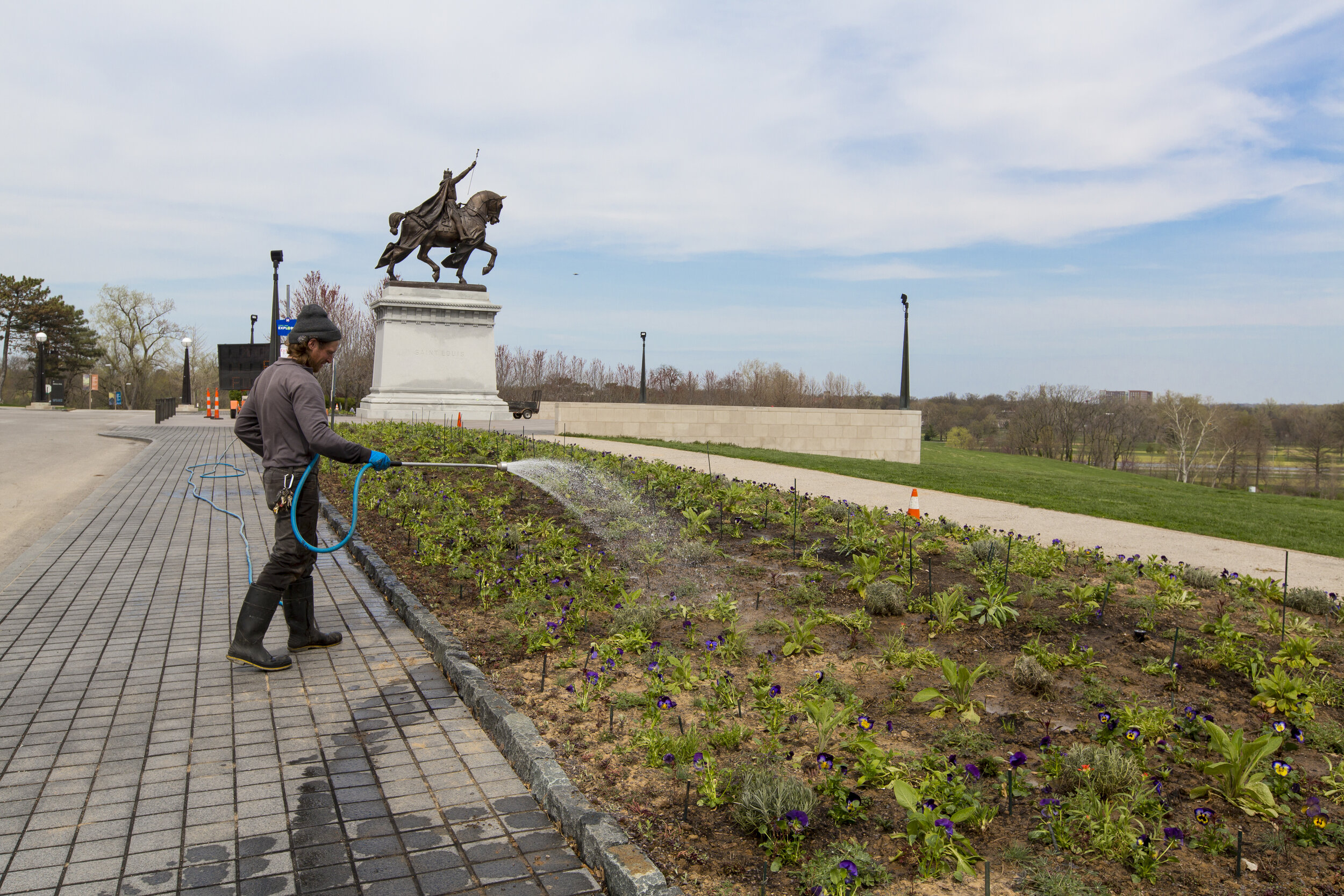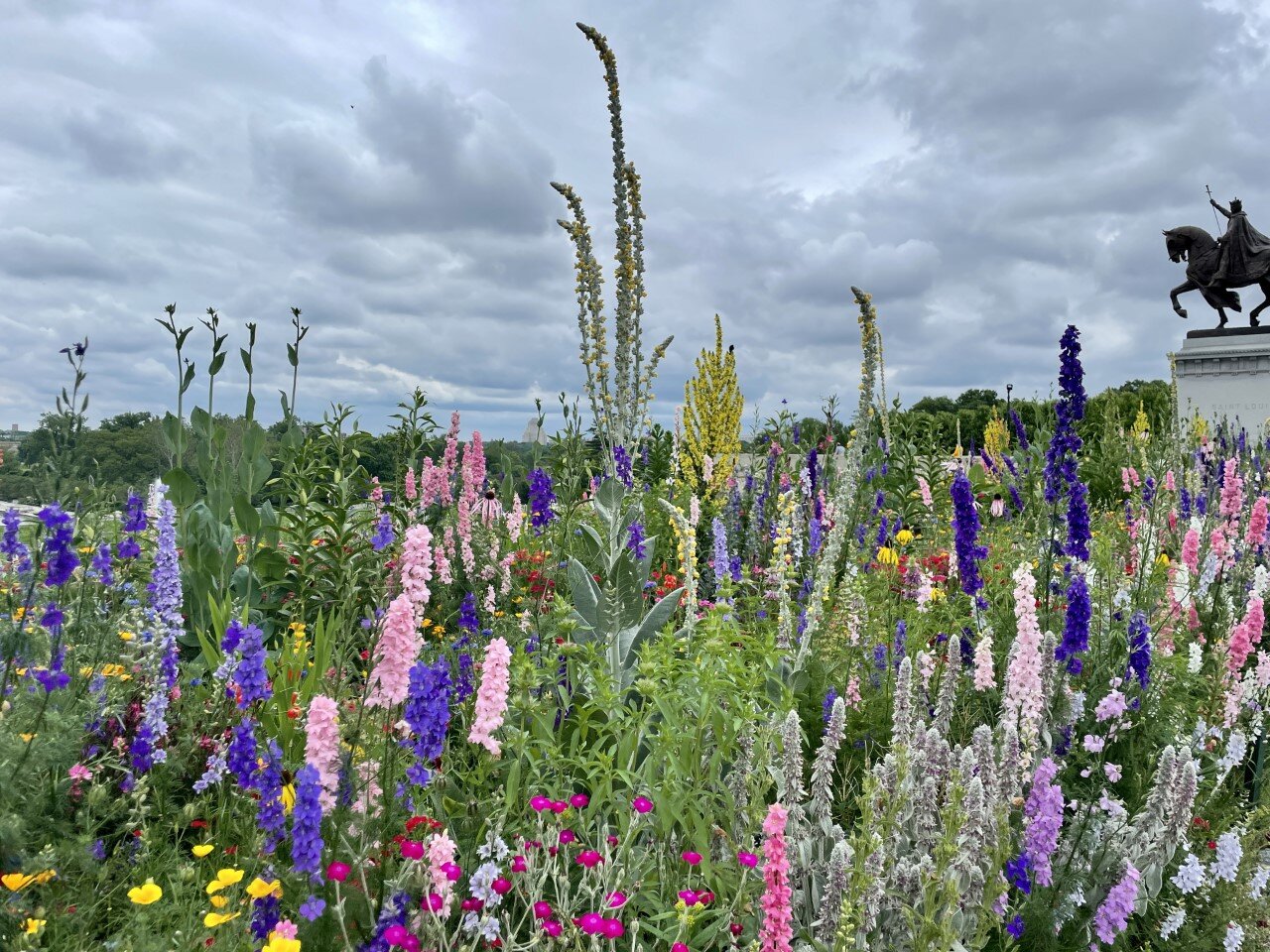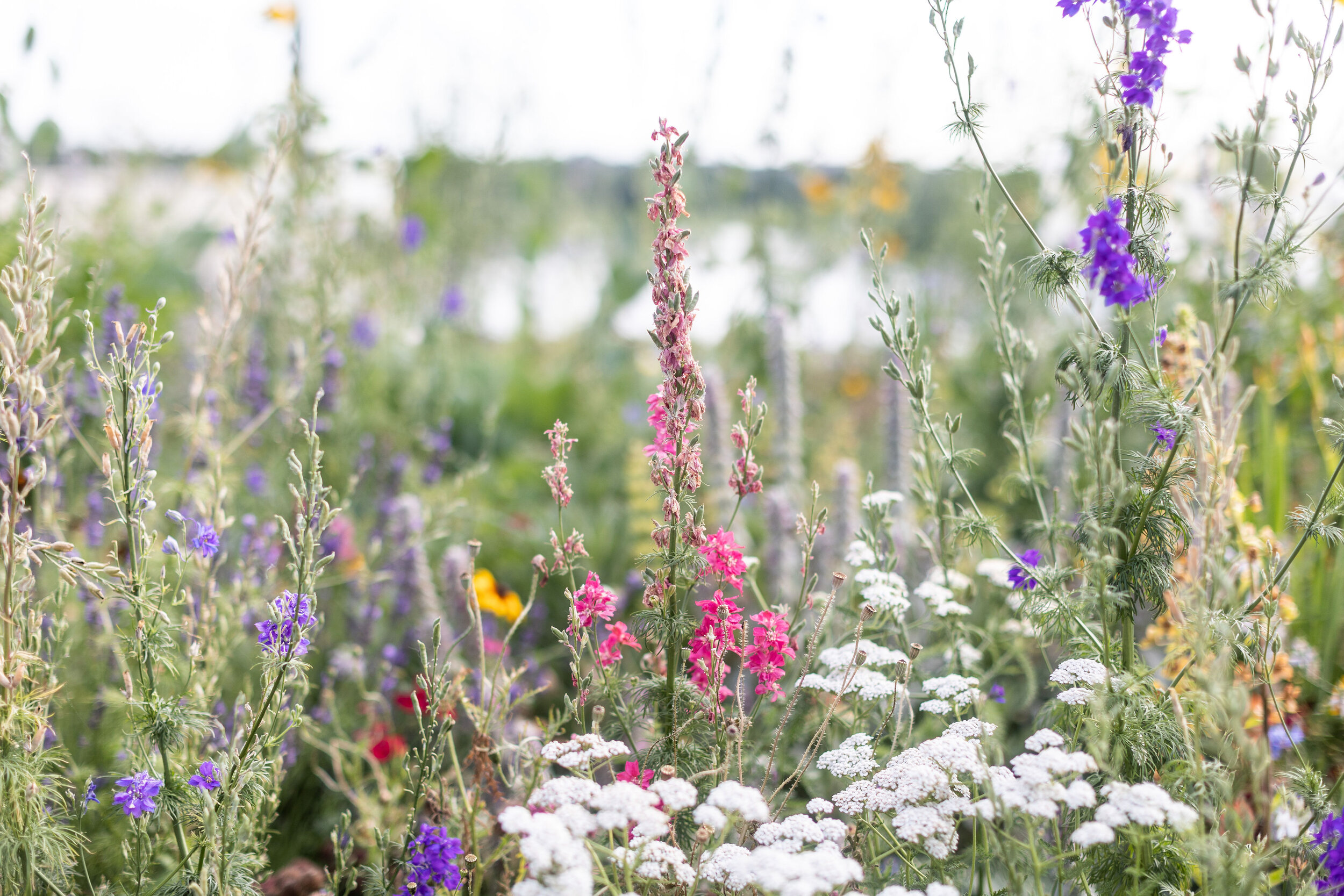A Work of Art: Patrick Greenwald's Evolutionary Flower Beds
During Park and Recreation Month, we’re celebrating the people who help make Forest Park a beautiful urban oasis throughout the year. For St. Louis native Patrick Greenwald, a horticulturist with Forest Park Forever, enhancing the legendary flower beds of the Park is an honor that brings much joy to every day.
“I’ve worked for Forest Park Forever on and off for about six years now,” says Greenwald, who works in Zone 3 of the Park, also known as the Zone in Motion. “I’m a member of a team with two full-time gardeners, 1 to 2 seasonal gardeners in the summer and 1 to 2 interns.”
Greenwald started out working in Zone 2 near the Boathouse in Forest Park and found a passion for planting vivid, inspirational flower beds and gardens. His interest in gardening began after taking a class on the history of Forest Park and reading a book called World's Fair Gardens: Shaping American Landscapes. The book went into detail on the gardening displays at World’s Fairs in the late 1800s and early 1900s, which changed the way American’s gardened. “Wildflower gardens with 150+ types of plants became more prominent and it was much different than the Victorian-style gardening folks were used to,” says Greenwald. “Now, when you look at the work I do in the Park, you’ll see a lot of that inspiration in the matrix of flowers, especially in what we have up at Art Hill.”
In each of the different zones of the Park, the flower beds are the feature pieces. In Greenwald’s current zone, there are two terminals at the top of Art Hill that together take 1,000 square feet. For Greenwald, creating annual displays for the space can be a challenge, but it’s a challenge that’s well worth it.
“We renovated the gardens last spring right before the pandemic and it was much needed,” says Greenwald. “We added soil and cobblestone to increase and improve drainage, we resolved standing water issues in two sites to decrease chances of rotting, and we implemented displays with naturalistic planting. It’s not perfect yet, but it's definitely beautiful and improved.”
Greenwald refers to the naturalistic planting as “organized chaos” due to several different plants within the bed.
“This year, we had more than 150 different types of plants in the bed,” he says. So far, one plant has especially caught the eye of many visitors. “The crown imperial bulb has gotten a lot of inquiries because it’s not commonly planted and can be difficult to grow. Plus, those bulbs can be quite expensive so you usually don’t see them in mass. Not to mention, Missouri’s native soil is pretty heavy, so unless the soil is amended with sand and organic matter, these bulbs may not see successful growth. So, it was great to see visitors so excited about them!”
For Greenwald, hearing visitors’ rave reviews of the plants make all of his team’s hard work worth it. When he and his team planted rocket larkspur seeds, visitors were wowed by what they said looked like fireworks — a sea of purple, pink, white and blue flowers spread throughout the garden. Greenwald even shared that one visitor mentioned that the flower beds “were the pieces of art in St. Louis outside of the Art Museum.”
Currently, Greenwald’s flower bed is in transition from spring to summer. His team recently planted summer annuals, including a few perennial lilies and great coneflowers, with the goal to always have something of interest that causes people to stop and learn about gardening. And it’s working!
“Over the past two years, we’ve been getting a lot of great feedback from visitors,” says Greenwald. “One visitor mentioned that they love to see the flower bed because it reminded them of a rainbow, a combination of all different colors. We love letting plants mingle with each other because the colors always seem to work out and everything blends well.” One visitor even likened the flower beds to the works of famous French painter Claude Monet, noting the perfect melding of pastel colors.
For Greenwald, being able to be in nature doing what he loves, in the city that he grew up in and for a nonprofit he cares deeply about is about as good as it gets. However, the support and overwhelming enthusiasm from visitors has been the icing on the cake.
“Forest Park’s visitors are what really make this job worthwhile,” says Greenwald. “Everyone is so appreciative of the work we do in the Park and always stop to let us know how grateful they are. It’s really something special.”




